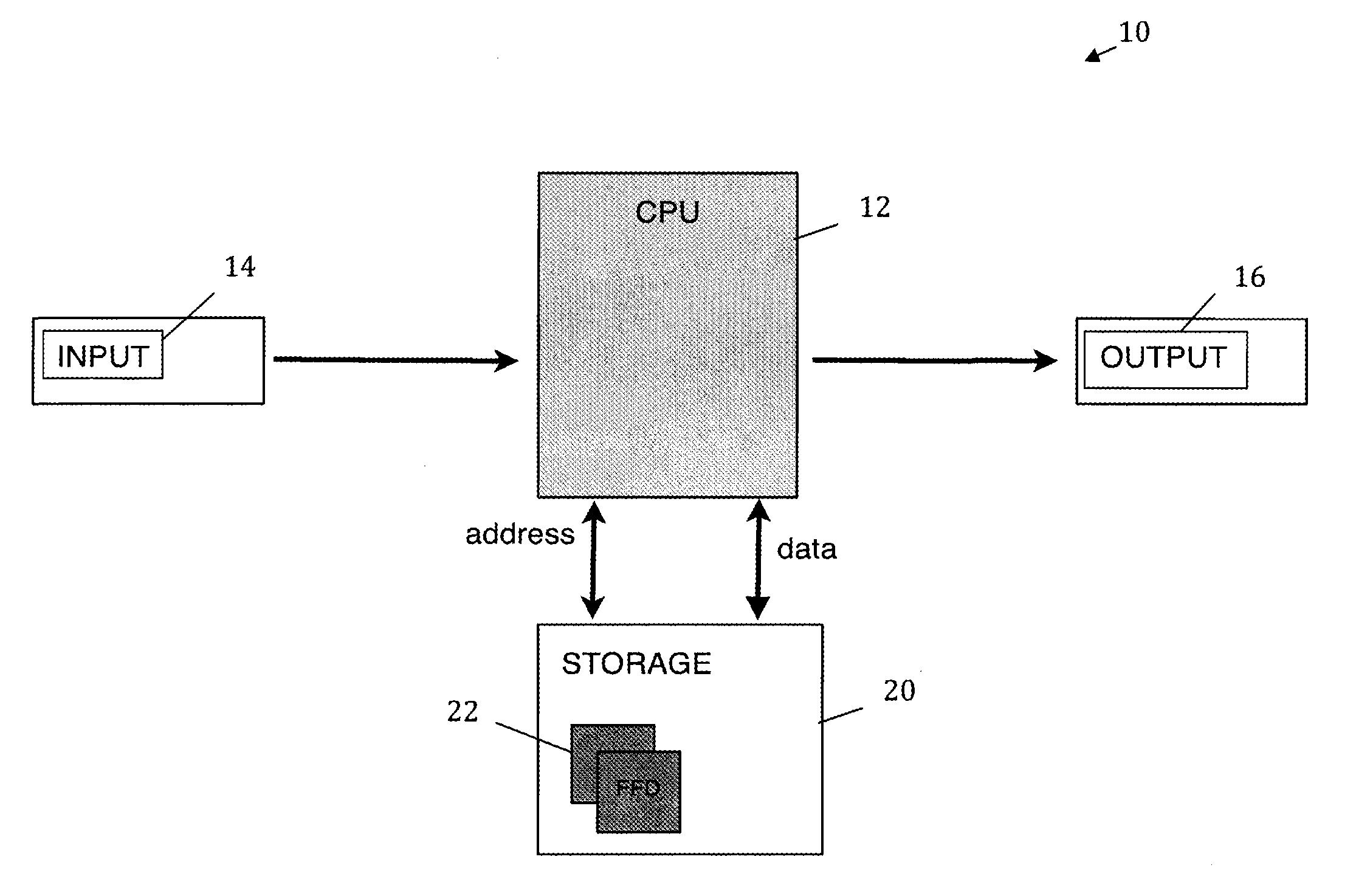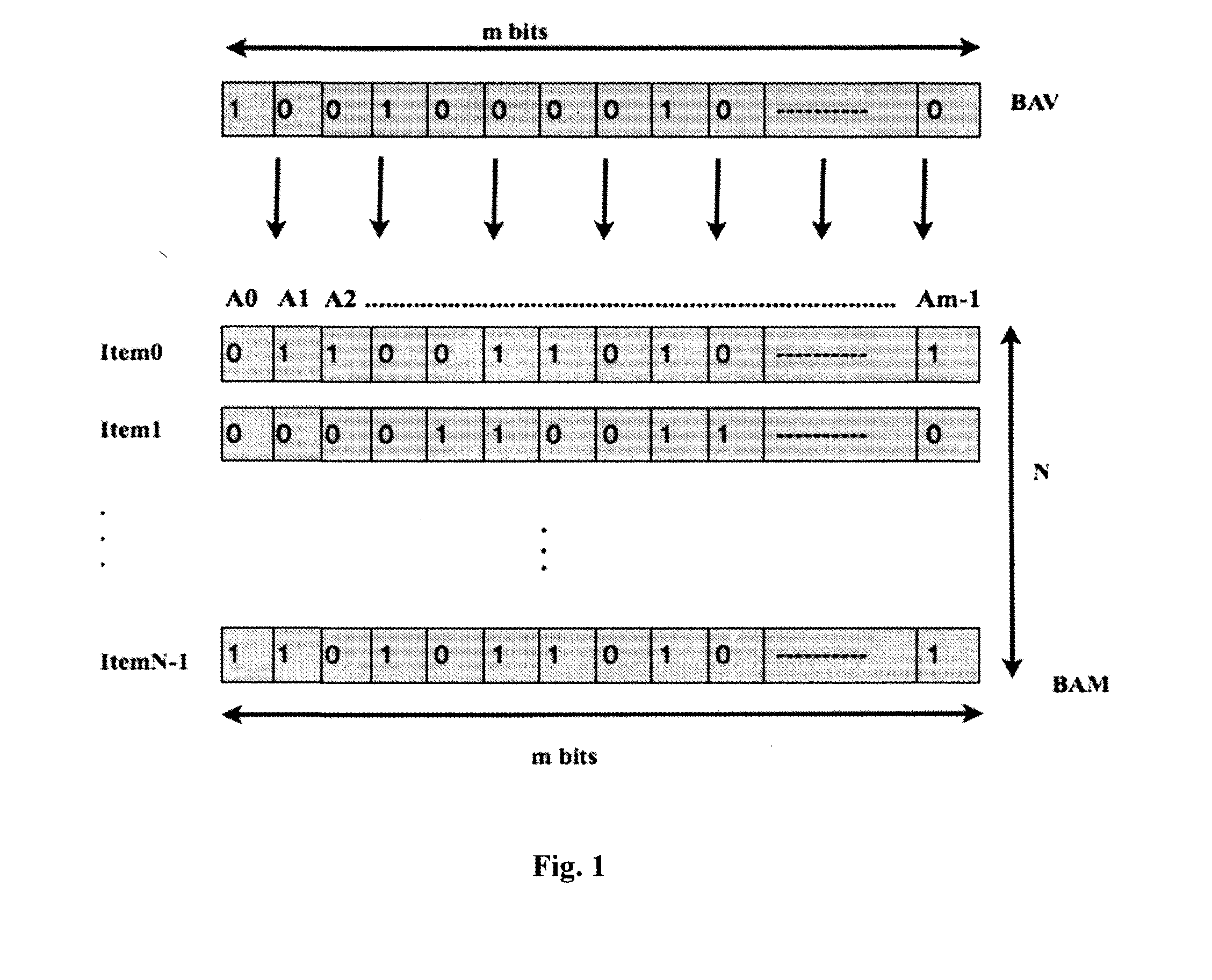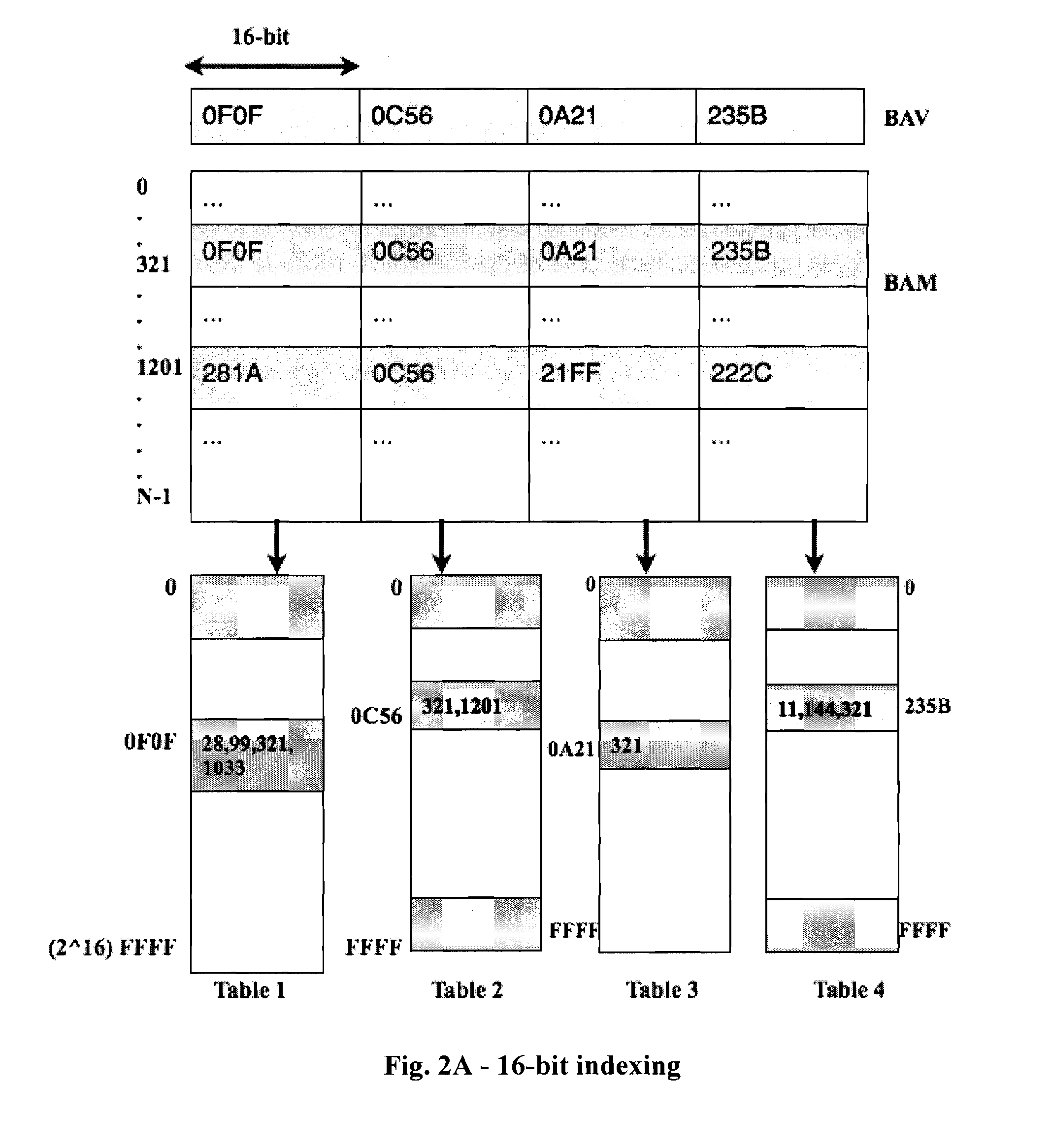System and method for approximate searching very large data
a large data and system technology, applied in relational databases, database models, instruments, etc., can solve the problems of affecting system performance, sequential look-up of files, and complicated computer science problems, and achieve the effect of more mismatch tolerance and accuracy
- Summary
- Abstract
- Description
- Claims
- Application Information
AI Technical Summary
Benefits of technology
Problems solved by technology
Method used
Image
Examples
first illustrated embodiment
me (FIGS. 1-7B)
[0044]The new search algorithm in accordance with this invention is called a “Pigeonhole search.” The Pigeonhole search introduces a new data structure and therefore, we have a direct access to dictionary of fixed size words without any mismatches (exact match). This section we are representing a preliminary step to our idea of approximate search using the Pigeonhole Principle with inverted tables.
[0045]Let's illustrate the problem as the following; considering a set of information items that are characterized by binary vectors with bit position values featuring the presence or absence of corresponding attributes [20]. Such collection of items is called “bit-attribute matrix.” It is a data structure for Boolean vector space [21]. It has N items vertically stored on it; each item horizontally has m bits, which is the characterizing attributes. FIG. 2A represents the basic definition of the problem, where we are looking for a bit-attribute vector (BAV) of length m=64 bi...
second illustrated embodiment
zzyFind Technique (FIGS. 8-12)
[0101]Organization of the retrieval of information items according to a fuzzy criterion essentially depends on the representation of information items and the method of their comparison [8]. The technique of the present embodiments presents efficient searching with fuzzy criteria in very large information systems. It is specifically aimed at selecting Binary Feature Vectors from the rows of Bit-Attribute Matrices that are within a specified Hamming distance. The technique, as we called it “Pigeonhole search” in the first embodiment above, uses a different approach based on the Pigeonhole Principle. The most effective realization of this technique is to use FuzzyFind Dictionaries (FFD)[1][2], as provided in the present embodiment.
[0102]The FuzzyFind Dictionary (FFD) is best illustrated in FIG. 8, and its operation is shown in FIG. 200. The FFD is a unique data structure that provides direct access to approximately matching information items, which are cl...
PUM
 Login to View More
Login to View More Abstract
Description
Claims
Application Information
 Login to View More
Login to View More - R&D
- Intellectual Property
- Life Sciences
- Materials
- Tech Scout
- Unparalleled Data Quality
- Higher Quality Content
- 60% Fewer Hallucinations
Browse by: Latest US Patents, China's latest patents, Technical Efficacy Thesaurus, Application Domain, Technology Topic, Popular Technical Reports.
© 2025 PatSnap. All rights reserved.Legal|Privacy policy|Modern Slavery Act Transparency Statement|Sitemap|About US| Contact US: help@patsnap.com



